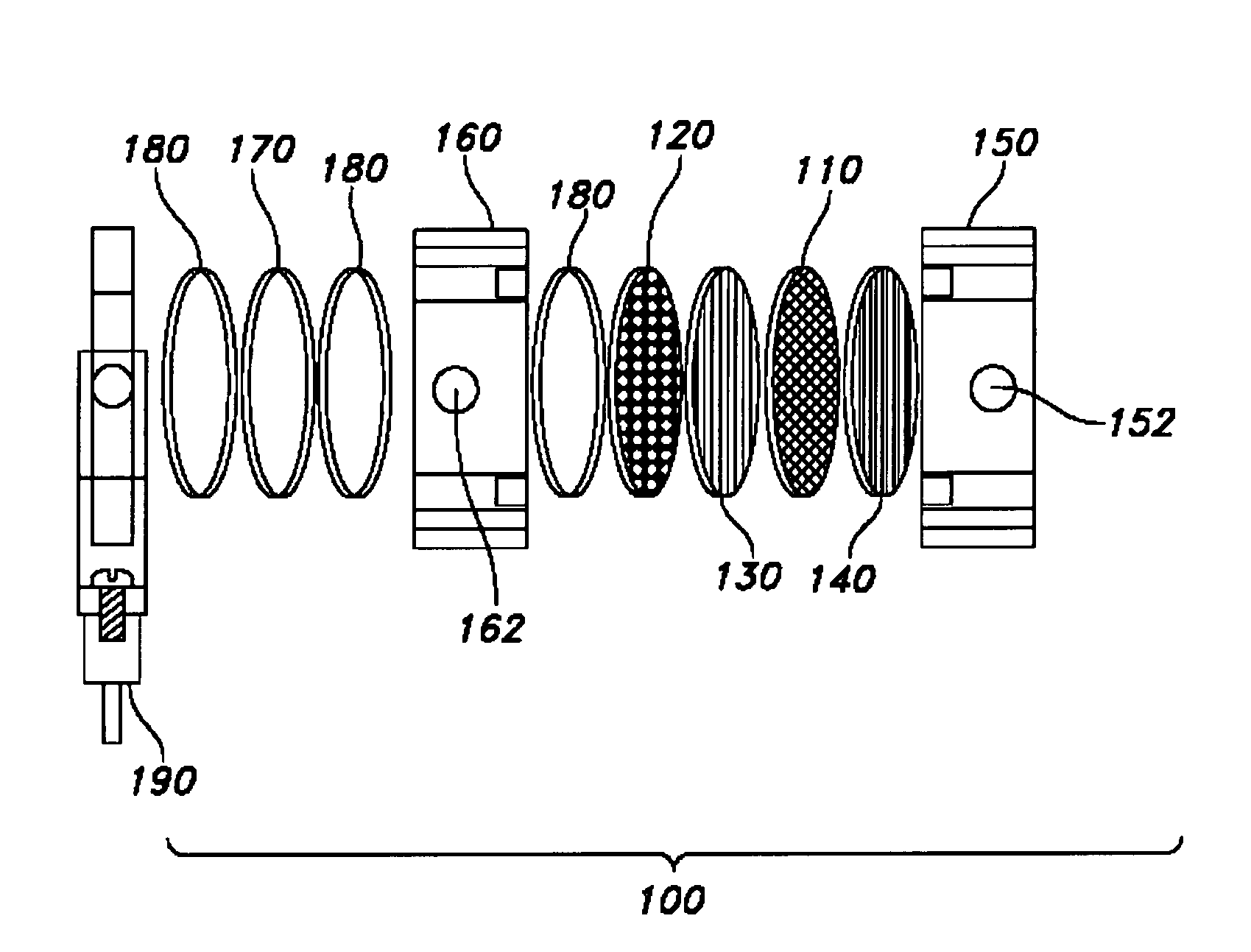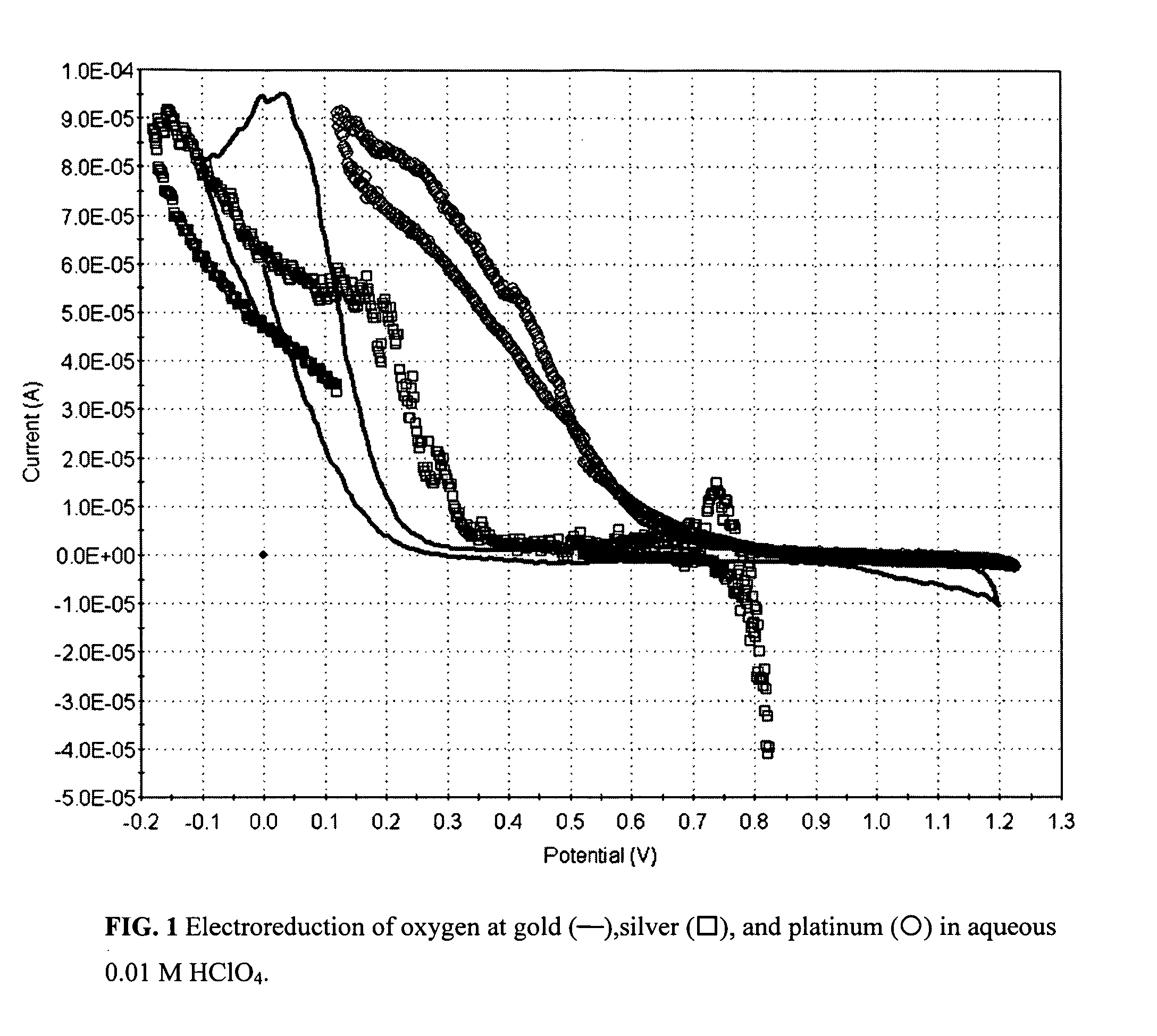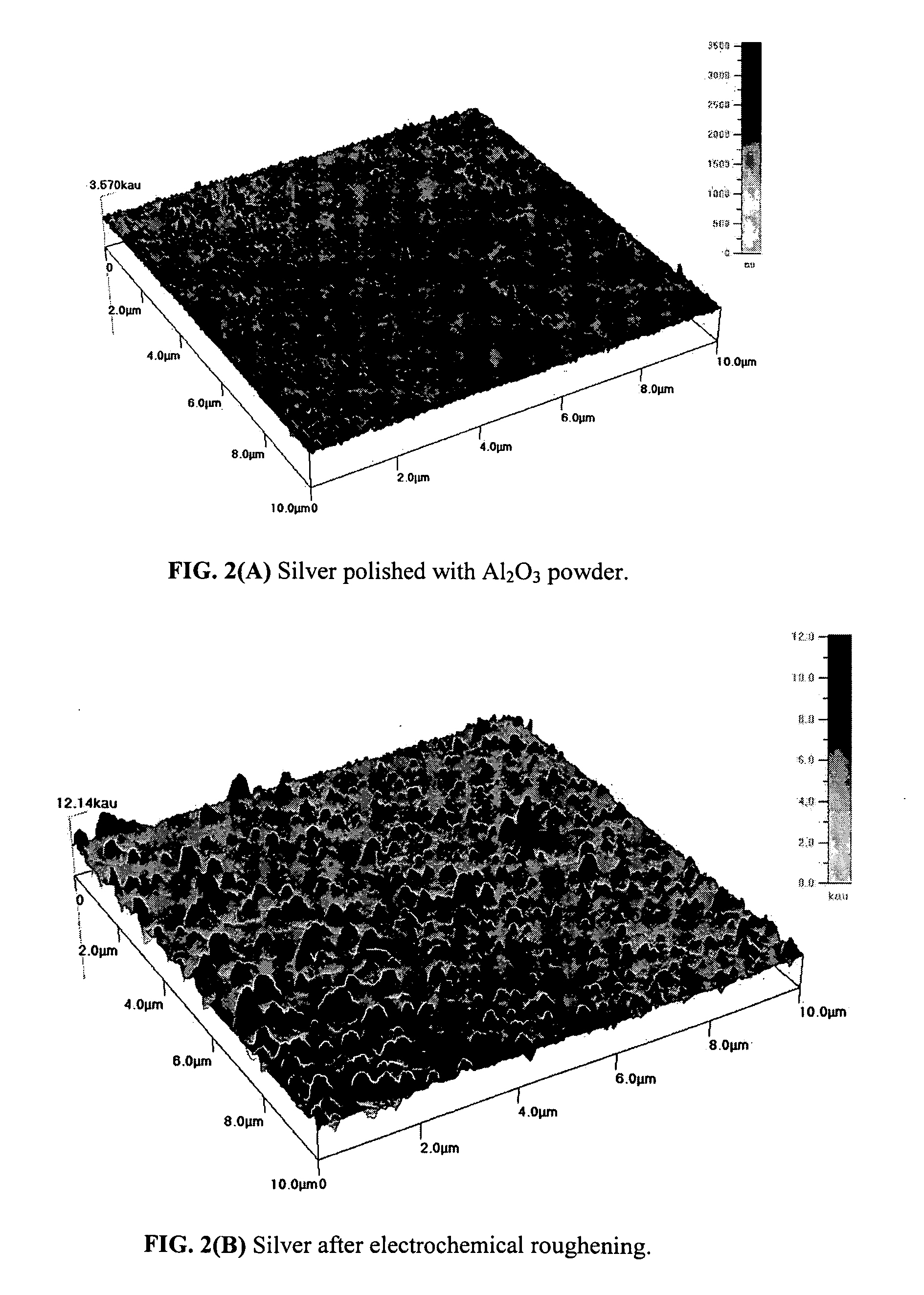Photocatalytic electrode and fuel cell
- Summary
- Abstract
- Description
- Claims
- Application Information
AI Technical Summary
Benefits of technology
Problems solved by technology
Method used
Image
Examples
example i
Silver Electrode Having Bis-Pyridyl Acetylene (“BPA”) Adsorbate
[0053]FIG. 3 depicts performance of bis-pyridyl acetylene (“BPA”) as an adsorbate. Specifically, FIG. 3 depicts the surface enhanced Raman spectrum of BPA adsorbed at a silver electrode as a function of applied potential. An Argon ion (Ar+) laser was operated at 5145 Å and 50 mW to produce the resulting spectrum. The voltages in FIG. 3 are reported relative to a Ag / AgCl reference electrode in 0.1 M NaCl. The spectrum recorded at −0.10 Volts compares with the normal Raman spectrum of BPA, while the spectra observed in the range −0.50 to −0.90 Volts are assigned to the radical anion of BPA, i.e., BPA−. The assignment of the product of electroreduction of BPA to its radical anion was made after (1) comparing the cyclic voltammogram with potential-dependent changes in the observed surface enhanced Raman spectrum, (2) vibrational analysis of those spectral changes, and (3) recognizing that the spectrum reported at −0.10 Volt...
example ii
Iodine Adsorbate Applied to Silver Electrode
[0067] As depicted in FIG. 9, irradiation of an iodine adsorbate-covered silver electrode caused immediate and sustainable reduction current when oxygen was continuously bubbled through an experimental cell.
[0068] In FIG. 9, the silver working electrode (0.15 cm2 area) was anodized ex-situ in 0.1 M NaCl for 50 mC per cm2 at +0.15 V then returned to −0.15 V for the purposes of preroughening. The silver was then dipped in a 5×10−4 M aqueous I2 solution for 10 minutes to adsorb iodine to the silver surface. Excess solution and non-adsorbed I2 were then removed by rinsing in distilled water prior to admission to the electrochemical cell. (5145 Å Ar+, 100 mW, oxygen saturation maintained by bubbling O2 through the 0.1 M NaCl electrolyte, V=−0.075 V).
[0069] The inset of FIG. 9 depicts the photocurrent measurement during the light off / on / off cycle. The cyclic voltammetry (□: light off, ●: light on) reveals reduction of oxygen at least 0.2 V mo...
PUM
| Property | Measurement | Unit |
|---|---|---|
| Electrical conductivity | aaaaa | aaaaa |
| Metallic bond | aaaaa | aaaaa |
| Electrical current | aaaaa | aaaaa |
Abstract
Description
Claims
Application Information
 Login to View More
Login to View More - R&D Engineer
- R&D Manager
- IP Professional
- Industry Leading Data Capabilities
- Powerful AI technology
- Patent DNA Extraction
Browse by: Latest US Patents, China's latest patents, Technical Efficacy Thesaurus, Application Domain, Technology Topic, Popular Technical Reports.
© 2024 PatSnap. All rights reserved.Legal|Privacy policy|Modern Slavery Act Transparency Statement|Sitemap|About US| Contact US: help@patsnap.com










